September 2021
Group: Tatiana Bohsali, Maria Shuttleworth
Group: Tatiana Bohsali, Maria Shuttleworth
THE IDEA
Now, we have identified the most common methods people use from our questionnaires and analysed them, I suggested that we test them. My idea was quite simple: why don't we ask a couple of people to use some of the learning methods for a week or so and then ask them how it was?
I saw a couple of useful things that we could get from this:
1. Assess people's motivation to use a certain learning channel - how often would they use it during the week? For how long?
1. Assess people's motivation to use a certain learning channel - how often would they use it during the week? For how long?
2. Have a better idea of what they like/dislike in different methods in order to get an overall picture and fresh perspective of what works and what doesn't, since the data we collected from the questionnaire was more about past experiences.
3. See how visuals actually impact language learning.
DECIDING ON THE VARIABLES
All sounded good, but we needed to decide on a few (a lot of) things before getting started.
Which learning channels would we employ? At first, we thought that using 3 apps from different categories would be the way to go. However, what if we contrasted between them? One - visual (app), one - audio (podcast), one - good old textbook, which is a middle ground between having a visual-heavy method, and one that has none.
How many people per each? We understood that it would be quite difficult to find people on short notice who would be willing to do this testing for us. Therefore, we set ourselves low expectations on how many people we would have. We realised that although it would've been better to have as many people as possible, it would still help us to have at least 2 or 3 people per method.
How would we assess their progress? This is where we got a little bit stuck. How do we give them the freedom to choose a language, yet be able to assess them upon completing the testing? To test - we needed to know the language they were learning in order to see their progress. Hence, we decided to stick to one language, which two of us spoke - French.
How would we keep track of when they study and for how long? This question also raised a lot of concerns. Since we wanted to test their motivation - we needed to be as least involved as possible to see whether or not participants would be practising/learning themselves. After a lot of discussions, we decided on the following. We provided them with guidance during the briefing, as to how long we recommend spending on it and how often and then took a step back. In order to track this, we were also thinking of asking them to do diary entries. However, we realised that would be a lot to ask and would affect the motivation factor. Therefore, we decided to create a "template diary" in a form of a questionnaire that would require minimum effort from them after completing their daily lesson.



Screenshots of the survey/diary we made for the participants to keep track of their progress throughout the testing. Developed collaboratively.
Synthesising: behavioural mapping
Although we weren't observing location-related behaviour, we were "observing" behaviours related to language learning, we still thought it would be great to map them out. So after the testing period ended we gathered together to synthesise the data we had from "diaries" into behavioural maps to see all of the aspects together on clear diagrams.

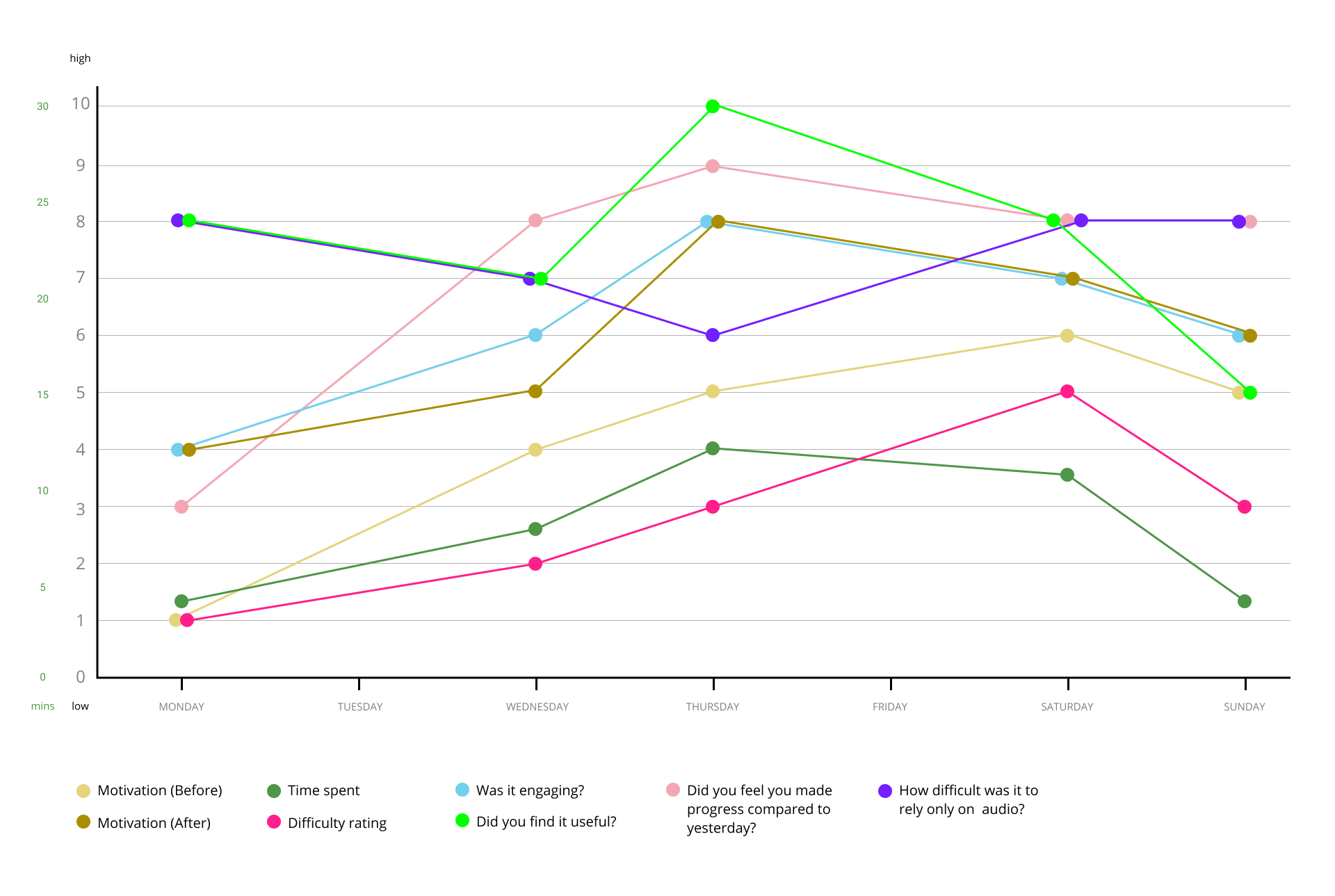
Results from the podcast diaries. Diagrams by me.

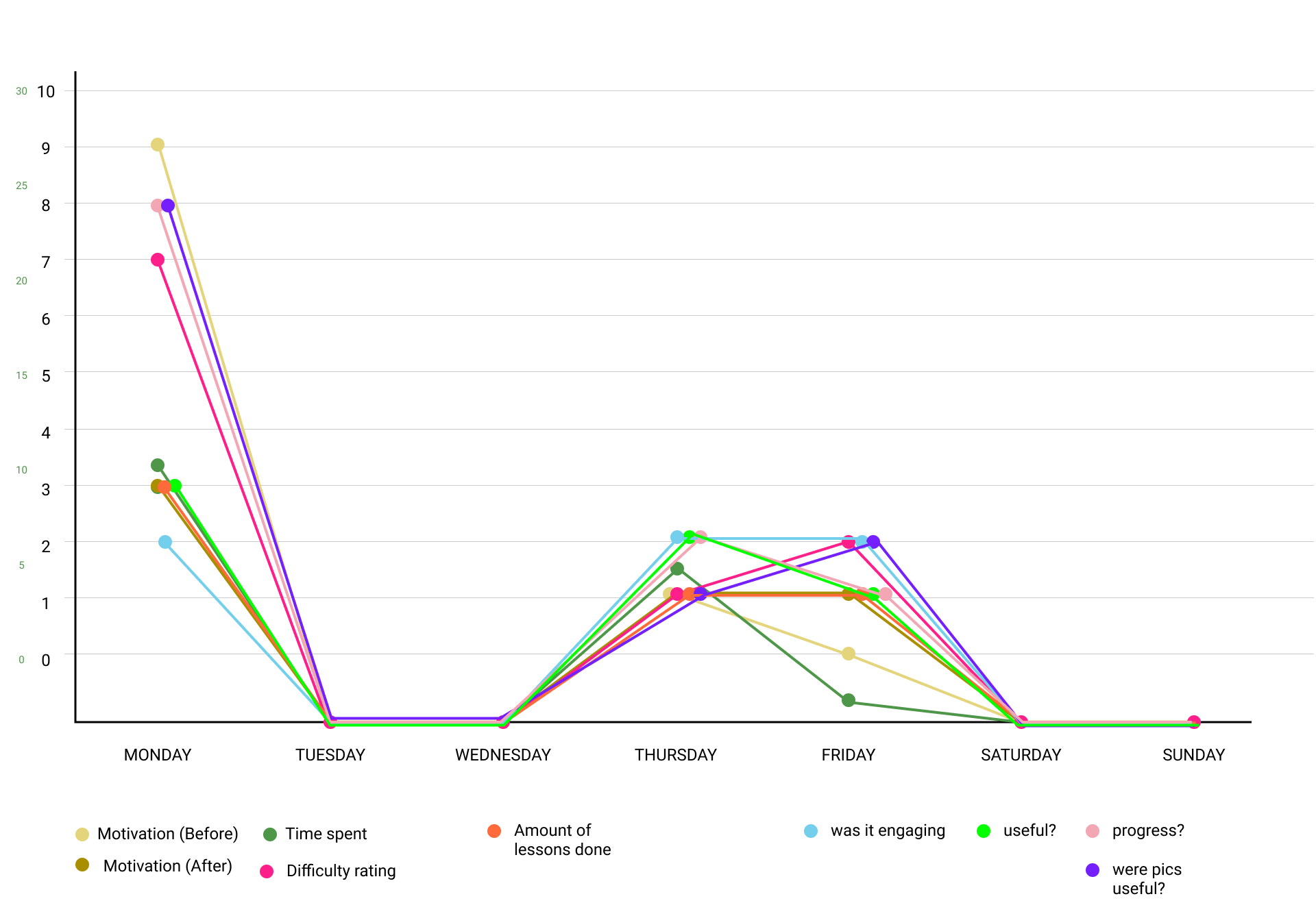
Results from the textbook diaries. Diagrams by Tatiana.
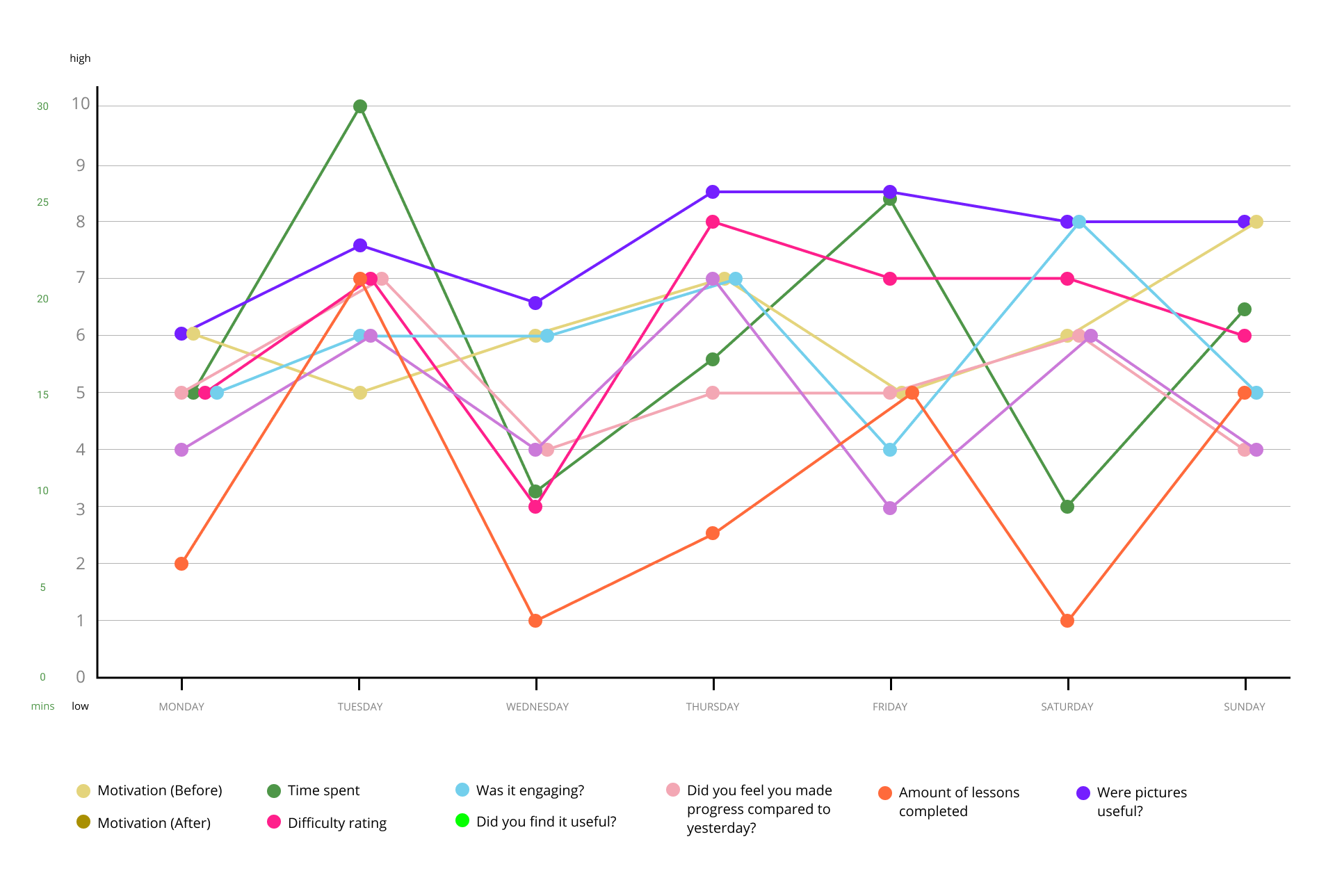

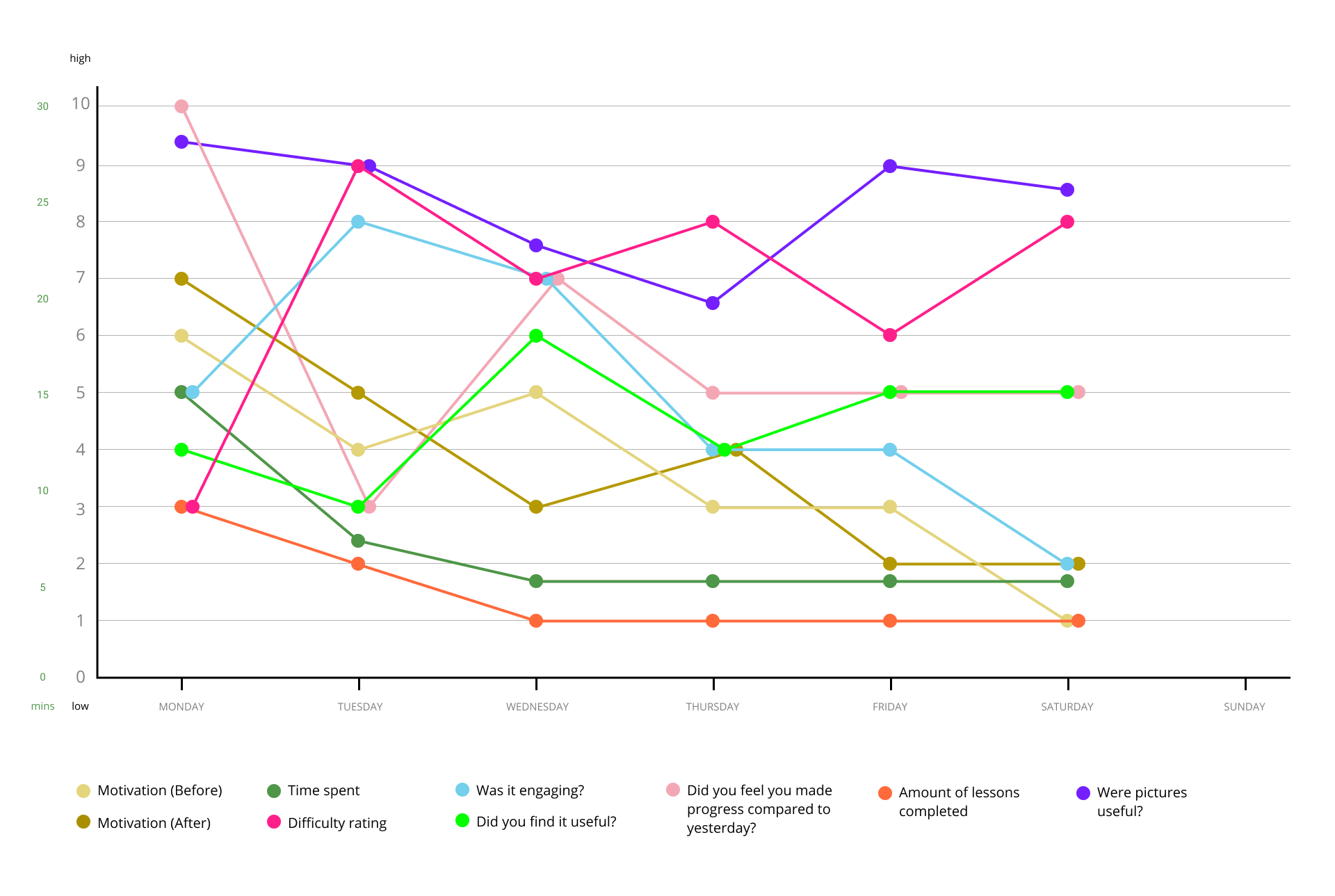
Results from the Duolingo app diaries. Diagrams by Maria.
After the week has ended we each organised a call with our participants to discuss how the week went which was very helpful to understand their feelings and the progress they made. Thus, we were able to organise the results into the following key insights that informed our next steps:
There is no way in any of the learning channels we used to go back to past work and revisit what participants learnt easily which was expressed by all the participants.
Being consistent is a crucial part of learning as it improves your motivation and makes the learning process easier and more productive every time.
Images were proven to be important as podcast users reported a lack of them and textbook/app participants claimed they lacked depth and wished they were more relatable and encompassing of what they are learning
Participants highlighted the importance of speaking, listening and intrapersonal communication when learning a new language.
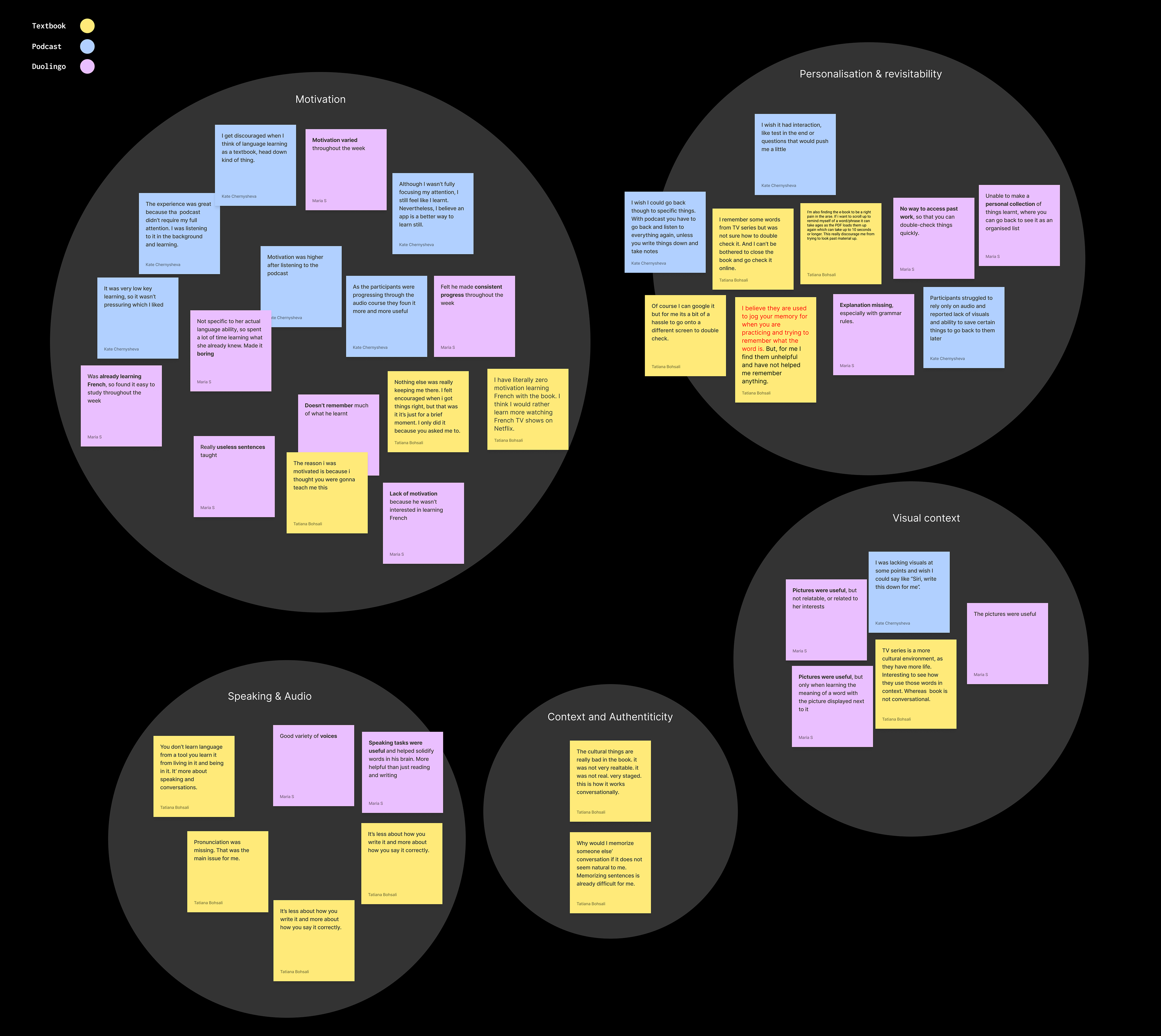
Conclusion
Although this research method proved to be useful for us in terms of finding out how people use different channels, there are also some limitations that could have affected the results. We used the same language for all of the participants, which helped us assess the progress but it also could have lowered their motivation levels and affected the results as they simply weren't as interested in learning as they might have been if we let them choose a language. This test could also be improved further if we included some more specific open-ended questions for participants to elaborate on some parts. Furthermore, at that stage, we were still in the research stage of the project and we needed to start moving on to making...
BIBLIOGRAPHY
Martin, B. and Hanington, B., 2012. Universal methods of design. Beverly, Massachusetts: Rockport Publishers.